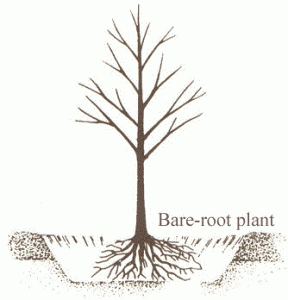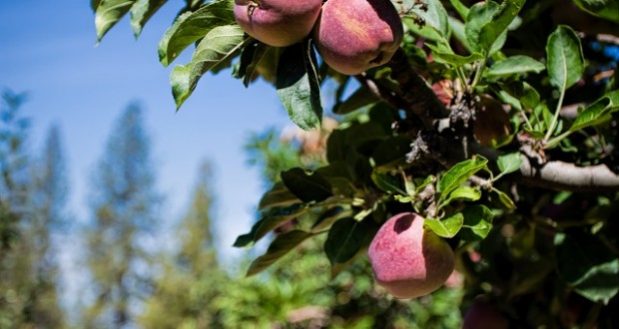 By Bob Labozetta, Master Gardener —
By Bob Labozetta, Master Gardener —
MOUNTAIN AREA — Now is a great time to plant bare root fruit and nut trees, although anytime from January through March works. At this time there should be a wide selection of cultivars that are much less expensive than containerized specimens, making it easier to transport.
The process of planting bare root fruit and nut trees begins with selection. Determine what fruits and nuts you enjoy eating the most. Read the descriptions of various cultivars in catalogs (online or in print) and select specimens that do well in your growing area. Seeking advice from local nurseries that sell fruit and nut trees helps determine the varieties that do best in your area. For backyard orchards, dwarf and semi-dwarf trees are very manageable.
Be sure to pick trees that will grow in your USDA climate zone and have an appropriate number of chill hours in your climate. Determine if your selection needs a pollinator tree and make sure they are planted within 50 feet of each other and bloom at the same time.
Pay attention to your desired harvest intervals. Determine if you want your tree fruits to ripen all at the same time (for canning), spread out over a longer season for fresh eating, or a combination of both. Harvest interval charts are available here, and here, and elsewhere online.
When you get your bare root tree(s) home, plant them as soon as possible. Prior to planting, remove the sawdust or shipping medium from the root ball and soak the roots in water overnight but not more than 24 hours. For each tree dig a square hole three times as wide and just as deep as the root ball. Scarify the sides of the hole with the edge or point of your spade or shovel. Do NOT add soil amendments to the planting hole as this will discourage the roots from growing beyond the hole.
Mound some soil removed by the digging in the center of the hole, pack the conical mound firmly, spread the roots around the mound, and be sure to plant to the depth the tree was planted in the nursery making sure the highest perennial root ends up about 3 inches below the soil line and the graft union (where the rootstock and scion join) is above the surrounding and slightly mounded soil level.
 Water the tree thoroughly and periodically pull up on the tree gently to release any air pockets. Initial pruning should limit the freshly planted tree to a height of about 30 inches (the next OtGF article will cover pruning in more depth).
Water the tree thoroughly and periodically pull up on the tree gently to release any air pockets. Initial pruning should limit the freshly planted tree to a height of about 30 inches (the next OtGF article will cover pruning in more depth).
Fertilizing a new tree is not normally recommended, but there may be regional exceptions. Contact the local Master Gardeners for information about your location.
If you cannot plant the tree for awhile, “heel in” the tree by loosely covering the root ball with wood shavings (no cedar or redwood as these are toxic to the tree) and keep moist. If you need to heel in for an extended period of time, avoid freezing temperatures, avoid standing water, keep the roots moist but not soggy, and store the tree ideally between 35℉ – 48℉.
For more information on fruit and nut trees, refer to the UC’s California Backyard Orchard and do a general word search of “bare root fruit trees” on the UC website.
Bob Labozetta is a Master Gardener in Mariposa.
For further gardening information and event announcements, please refer to the Mariposa Master Gardener website and Facebook page — Mariposa Master Gardeners. UC Master Gardeners staff the help desk and phone helpline serving Mariposa County, including Greeley Hill, Coulterville and Lake Don Pedro. Phone 209-966-7078 or Email.




